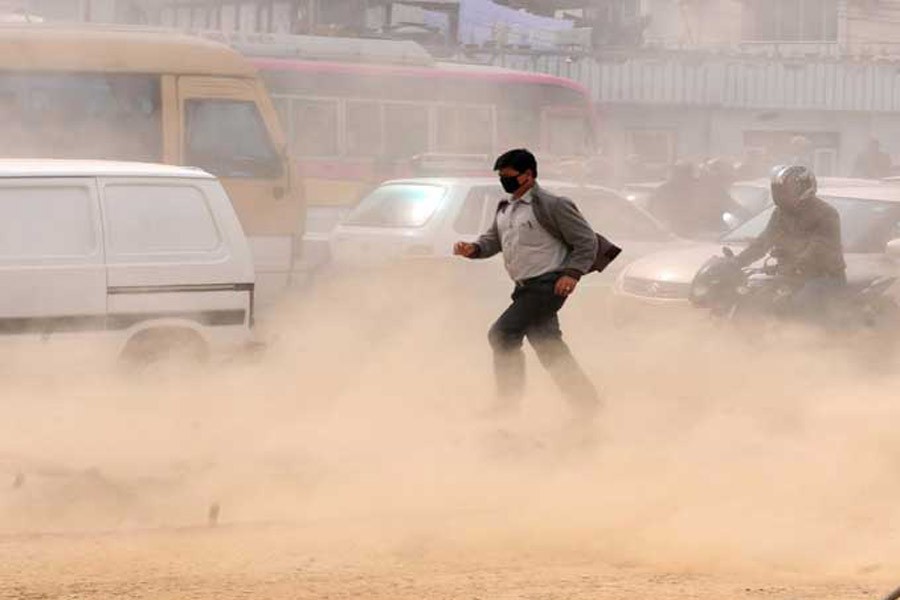
Published :
Updated :

The Poribesh Bachao Andolon (POBA) and other allied rights organisations have drawn the government's attention to one of the much neglected health hazards in the capital city. The hazard concerns dust pollution at an unacceptable level and with which people are compelled to live as an attendant ill of urban life. No city in a tropical country is dust-free. Even villages have to take a heavy dose of dust when wind blows but the sand or dust blown by storms and strong winds are not as pernicious there as the ones in an urban centre. The green groups arranged a rally and human chain to alert the authorities well in advance in order for the latter to work out steps capable of preventing excessive dust pollution during the dry season of winter. In fact, invasion of dust in certain areas of the city has been so unabatingly ruthless that pedestrians and commuters frequenting those segments of thoroughfares can feel the unease quite easily.
In this context Indian capital Delhi has certainly beaten many Asian cities including a few of the infamous Chinese cities on that count. Smog and dust enveloped Delhi like a blanket forcing closure of schools in that city for days together. Foreign diplomats were supposed to meet the external affairs ministry a couple of days ago to express their concern over the poor quality of air in the Indian capital. An envoy of Latin America had to shift her office to Bengaluru, complaining discomfort in breathing. Dhaka's air has not deteriorated suddenly on exogenous grounds as is the case in Delhi. Burning of crop residues by farmers in Punjab and Haeyana is said to be responsible for the sudden deterioration of air quality there. Brick kilns around Dhaka, particularly in a vast area off Amin Bazar spew smoke, taking a heavy toll on the city's air on a permanent basis. In the winter, the smoke cannot go up because of dew, leading to a heavy layer of smog.
However, flying dust within the city together with fumes from automobiles does not contribute any less to the rising pollution here. Road dug out by several organisations without coordinating their activities compound the problem further. Also construction materials such as sand and brick chips are piled in the open without protection and all these generate dust well beyond the tolerable level. No wonder Dhaka City's Air Quality Index (AQI) in excess of 300 points is far above the moderate level in between 50-100 points.
In a situation like this, the inhabitants of the capital city have to count a cost in terms of health, medical treatment, cleaning and damage to household appliances. But it is damage to people's health and medical bill that surpass everything else. Unless people who work for the utility services are aware of the adverse impacts of their unregulated actions, the quality of air in the capital or other urban centres cannot be improved. So, the government must take a conscious decision on the public works in the city with the objective of bringing such works under a comprehensive coordinated action plan.


 For all latest news, follow The Financial Express Google News channel.
For all latest news, follow The Financial Express Google News channel.